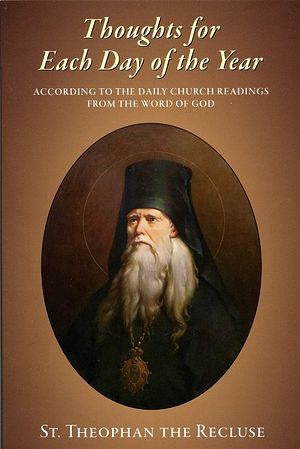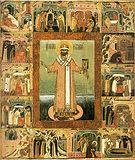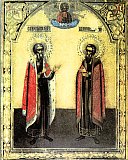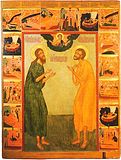

| Previous day | Next day |
| Old Style
July 3
|
Saturday |
New Style
July 16
|
| 4th Week after Pentecost. Tone 2. | Fast-free period.
|
![]() Martyr Hyacinth of Caesarea in Cappadocia (108).
Martyr Hyacinth of Caesarea in Cappadocia (108). ![]() Second translation of the relics of Hieromartyr Philip, metropolitan of Moscow and all Russia (1652).
Second translation of the relics of Hieromartyr Philip, metropolitan of Moscow and all Russia (1652).
Martyrs Diomedes, Eulampius, Asclepiodotus, and Golinduc (2nd c.). Martyrs Mocius and Mark (4th c.). St. Alexander, founder of the Monastery of the Unsleeping Ones, Constantinople (ca. 430). St. Anatolius, patriarch of Constantinople (458). St. Anatolius, recluse, of the Near Caves in Kiev (12th c.) and St. Anatolius (another), recluse, of the Far Caves in Kiev (13th c.). Repose of St. Basil, bishop of Ryazan (1295). Sts. Basil and Constantine, princes of Yaroslavl (13th c.). Sts. John and Longinus of Yarenga, monks of Solovki (1561). Blessed John of Moscow, fool-for-Christ (1589). St. Nicodemus of Khozyuga, monk of Kozhaezersk Monastery (1640). St. Basil, archbishop of Novgorod (1352). Blessed Michael, Herodion, Basil, and Thomas, fools-for-Christ, of Solvychegodsk (17th c.).
New Hieromartyr Anthony (Bystrov), archbishop of Arkhangelsk and Kholmogorsk (1931).
“Milk-Giver” Icon of the Most Holy Theotokos of Hilandar, Mt. Athos.
St. Germanus, bishop of the Isle of Man and enlightener of Peel, nephew of St. Patrick of Ireland (474). St. Symeon the Stylite (the third), of Cilicia (6th c.). St. George the Godbearer, of the Black Mountain, teacher of St. George of Mt. Athos (1068). St. Joachim, monk, of Notena in Achaia (17th c.). New Monk-martyr Gerasimus the New, of Carpenision, at Constantinople (1812). Martyrs Theodotus and Theodota, martyred with St. Hyacinth at Caesarea in Cappadocia (108).
Repose of Nun Euphrosyne “the Unknown,” of Kolyupanovo (Aleksin) (1855).
Thoughts for Each Day of the Year
According to the Daily Church Readings from the Word of God
By St. Theophan the Recluse

Saturday. [Rom. 6:11-17; Matt. 8:14-23]
To one of those who wanted to follow the Lord, He said: The Son of man hath not where to lay his head, and to another who wanted first to bury his father, He said to leave the dead; others will bury him, but you follow Me. This means that he who wants to follow the Lord should not expect any comfort on the earth after following Him, but only deprivations, needs and sorrows; and it means that worldly cares, even the most legitimate, are not compatible with following Him. It is necessary to decisively renounce everything, so that nothing attaches you to the earth, and then to condemn yourself to many sufferings or your cross. Having thus prepared yourself, follow the Lord. This is the direct will of the Lord! But who is this commandment for—only the Apostles, or for all Christians? Let each figure it out himself. Deny yourself and take up the cross. Was this said to everyone? Love the Lord more than father and mother, brothers and sisters, wife and children—is this said to everyone? The conclusion is clear. What should we do? One time the Apostles posed the same question to the Lord, and He answered them, The things which are impossible with men are possible with God (Luke 18:27).
Articles
 Martyr MociusThe Holy Martyrs Mocius and Mark were arrested as Christians and brought to trial by the governor Maximian. |
 Martyr MarkThe Holy Martyrs Mocius and Mark were arrested as Christians and brought to trial by the governor Maximian. |
 St Basil the Bishop of Ryazan |
 Right-believing Prince Basil of Yaroslavl |
 Right-believing Prince Constantine of YaroslavlIn their youth they lost their father, Vsevolod, who fell in battle with the Tatars (Mongols). St Basil, the elder brother, succeeded to the throne. |
 Venerable Nicodemus the Abbot of Kozhe Lake |






